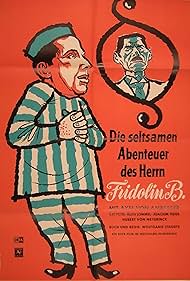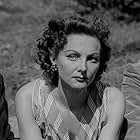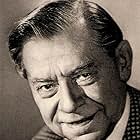IMDb RATING
7.4/10
27
YOUR RATING
Photos
Ursula Krieg
- Geliebte des falschen Biedermanns
- (as Ursula Kriegk)
- Director
- Writers
- All cast & crew
- Production, box office & more at IMDbPro
Storyline
Did you know
- ConnectionsRemake of Der Mann, dem man den Namen stahl (1944)
Featured review
In 1944 Wolfgang Staudte shot a film called "The Man, Who Had His Name Stolen". It was finished, but didn't pass the censorship and parts of it were lost in the war. After the success of the first post-war German film, "The Murderers Are Among Us", Staudte once again undertook to film the story he had tackled in 1944. As he used many of the same actors, it is believed that parts of the 1944 film were used, and other sequences re-shot with different actors three years later. "The Strange Adventure of Mr Fridolin B" was finally released in March 1948.
It was a year of some of the strangest films of the 40s in Germany. Staudte released "The Strange Adventure...", which is a well constructed, witty dry comedy about two men with identical names, who for some strange reason have been listed by the official bureaucracy as one. So they obviously have to share each-others fate to some extent. Helmut Käutner released "The Apple Fell", another allegorical fairy-tale with very similar, claustrophobic atmosphere where the bureaucrat is God, toying around with small people. These two films are very similar in style and feeling, and both are very well crafted, shot and edited.
Nevertheless, Staudte's film didn't meet with acclaim at the time. It was a period when "Trümmerfilme" ("Ruin films") were all the rage and films of individual and national guilt and responsibility (such as Staudte's next, "Rotation") made headlines. Comedies which grazed the screen were becoming hysterically optimistic, which was the trend of the nearing 1950s.
Both Staudte's and Käutner's films are as far from the real world as a film can be, creating a strange parallel universe within the familiar framework of our everyday lives. This kind of extreme escapism was quite popular during the War, but obviously it became outdated as the political system changed radically. It's hard to tell why the first version of "Fridolin B" was banned by the Nazzi officials as the film is now lost. But as it stands, the 1948 version is lost somewhere in no-man's-land, and obviously confused the viewer of that era.
Still, seeing it today is a pleasure. The Kafkan Angst combined with the utterly ridiculous storyline makes a tense, yet gleeful viewing. The fact that you are watching a film which crosses all the imaginable borders - partially filmed during the Nazi regime, partially by the Soviet-controlled DEFA - only adds to the surreal pleasure.
It was a year of some of the strangest films of the 40s in Germany. Staudte released "The Strange Adventure...", which is a well constructed, witty dry comedy about two men with identical names, who for some strange reason have been listed by the official bureaucracy as one. So they obviously have to share each-others fate to some extent. Helmut Käutner released "The Apple Fell", another allegorical fairy-tale with very similar, claustrophobic atmosphere where the bureaucrat is God, toying around with small people. These two films are very similar in style and feeling, and both are very well crafted, shot and edited.
Nevertheless, Staudte's film didn't meet with acclaim at the time. It was a period when "Trümmerfilme" ("Ruin films") were all the rage and films of individual and national guilt and responsibility (such as Staudte's next, "Rotation") made headlines. Comedies which grazed the screen were becoming hysterically optimistic, which was the trend of the nearing 1950s.
Both Staudte's and Käutner's films are as far from the real world as a film can be, creating a strange parallel universe within the familiar framework of our everyday lives. This kind of extreme escapism was quite popular during the War, but obviously it became outdated as the political system changed radically. It's hard to tell why the first version of "Fridolin B" was banned by the Nazzi officials as the film is now lost. But as it stands, the 1948 version is lost somewhere in no-man's-land, and obviously confused the viewer of that era.
Still, seeing it today is a pleasure. The Kafkan Angst combined with the utterly ridiculous storyline makes a tense, yet gleeful viewing. The fact that you are watching a film which crosses all the imaginable borders - partially filmed during the Nazi regime, partially by the Soviet-controlled DEFA - only adds to the surreal pleasure.
Details
- Release date
- Country of origin
- Language
- Also known as
- Herr Fridolins sällsamma äventyr
- Filming locations
- Production company
- See more company credits at IMDbPro
- Runtime1 hour 23 minutes
- Color
- Sound mix
Contribute to this page
Suggest an edit or add missing content








